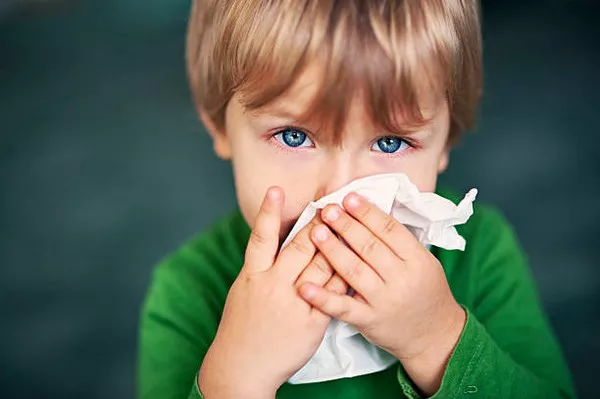A recent perspective article in The New England Journal of Medicine by medical experts from the Consortium for Children’s Environmental Health urges a reevaluation of existing chemical regulations to better protect children from the risks associated with synthetic chemicals. These experts emphasize the need for stronger regulatory frameworks to shield vulnerable populations, particularly children, from the harmful effects of manufactured chemicals that contribute to noncommunicable diseases (NCDs). The article argues for a fundamental restructuring of current laws and highlights the responsibility of the chemical industry to prioritize public health, especially that of children.
The global presence of synthetic chemicals is overwhelming. Over 350,000 chemicals, including plastics, are currently listed worldwide, and their production continues to grow at a rate of 3% annually. Projections suggest that by 2050, this number will triple, exacerbating the associated health risks.
In recent decades, the incidence of NCDs in children has dramatically increased. Childhood cancers have risen by 35%, male reproductive congenital disabilities have doubled, and pediatric obesity has quadrupled. Other conditions, such as asthma, type 2 diabetes, and neurodevelopmental disorders, have also seen significant growth. In contrast, adult NCD rates have declined, highlighting the disproportionate impact these diseases are having on children.
Medical research has identified synthetic chemicals as a major factor in the development of these pediatric NCDs. Notable examples of chemical exposure include the thalidomide tragedy, Minamata disease, and diethylstilbestrol (DES) exposure, which affected tens of thousands of children globally. These incidents underscored the vulnerability of children, particularly during pregnancy, as toxic chemicals can cross the placenta. This realization led to the emergence of environmental pediatrics, focusing on how environmental factors influence children’s health.
Since the 1990s, key reports such as the 1993 National Research Council report and the 1996 Food Quality Protection Act have propelled research into the impact of chemicals on children. Findings indicate that even low-level exposure to chemicals during critical developmental stages can result in long-term health consequences, such as lower IQ scores, neurodevelopmental delays, and an increased risk of chronic diseases. For instance, studies estimate that lead exposure in children has reduced average IQs in the U.S. by 2 to 5 points, leading to significant economic costs.
Epidemiological studies have also linked prenatal exposure to substances such as lead, phthalates, and per- and poly-fluoroalkyl substances (PFAS) with various health disorders and cognitive impairments. The removal of lead from gasoline is a prime example of how reducing chemical exposure can result in substantial public health and economic benefits, with cumulative gains exceeding $8 trillion in the U.S. since 1980.
Despite the clear risks, the U.S. Toxic Substances Control Act (TSCA) of 1977 has largely failed to protect children from harmful chemical exposure. TSCA allows manufacturers to introduce new chemicals without pre-market toxicity testing or long-term safety monitoring. The burden of proof falls on the Environmental Protection Agency (EPA), which must identify hazards and justify regulatory action, leading to minimal restrictions on dangerous chemicals. Less than 20% of manufactured chemicals have undergone toxicity testing, and even fewer have been evaluated for their impact on children.
While the European Union’s Registration, Evaluation, Authorization, and Restriction of Chemicals (REACH) policy requires some safety screening, it still heavily relies on data provided by the industry and includes numerous exemptions. As a result, only a limited number of chemicals have been banned or restricted, and both U.S. and EU policies fail to address the cumulative effects of chemical mixtures or adequately consider children’s unique vulnerabilities.
The chemical industry remains a dominant force in the global economy, contributing to about 25% of the U.S. gross domestic product. With minimal regulatory oversight and robust legal protections, the industry continues to produce chemicals with limited accountability for their environmental and health impacts.
To safeguard children’s health, the article advocates for a precautionary approach to chemical regulation, where safety is prioritized over unchecked chemical production. It calls for independent and rigorous testing of chemicals before market introduction, as well as post-market surveillance to monitor long-term effects, especially on children. This approach would mirror the stringent regulations applied to pharmaceuticals and is aligned with international rights to a healthy environment.
The experts also recommend a global framework under the United Nations to address chemical pollution, with a science-policy body modeled after the Intergovernmental Panel on Climate Change (IPCC) to provide independent expert guidance. By requiring manufacturers to report chemical footprints, risks can be made transparent for both investors and governments, fostering accountability.
The article concludes with a call for a transformative shift in the chemical industry. Moving away from a fossil-carbon-based model, the industry should prioritize safety, sustainability, and innovative product design. By reducing reliance on fossil fuels and developing safer chemical alternatives, the industry can help mitigate the risks posed by synthetic chemicals.
Inaction on this front, the Consortium warns, would have far-reaching consequences for planetary health, children’s well-being, and the future of humanity. To protect future generations, urgent legal and industry reforms are needed, akin to the global shift toward clean energy. The time for action is now.
You Might Be Interested In:
-
Delayed Brain Maturation Linked to Unhealthy Eating Behaviors in Youth
-
Increasing Fiber Intake Promotes Good Gut Bacteria, Protects Against Infections
-
Hebrew SeniorLife Launches Clinical Trial on Probiotics and Prebiotics for Bone Health


